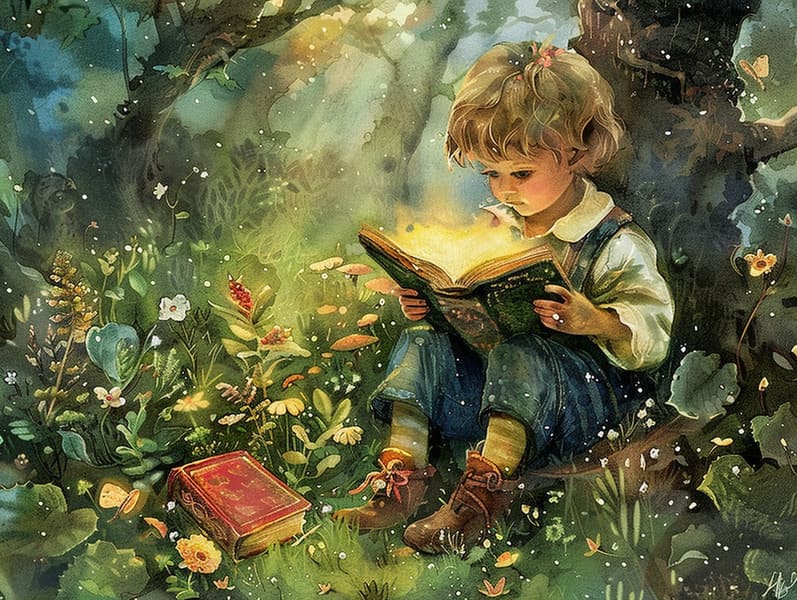Delving into the Background of Old Fairy Tales and Its Unchanging Splendor.
Delving into the Background of Old Fairy Tales and Its Unchanging Splendor.
Blog Article

Children's fairy tales have long histories. These stories have been shared from one generation to the next centuries before they were ever published. They arose from a variety of traditions, including Indigenous traditions. They were initially told among grown-ups, often carrying themes and messages related to the societal norms and beliefs of the time.
The Brothers Grimm, the two Grimm brothers, were among the first to collect many of these beloved narratives. Their volume, "Grimm's Fairy Tales," included stories like "Cinderella," "Hansel and Grethel," and "Little Snow White," which have since become pillars in the world of classic fairy tales. Similarly, Hans Andersen's delightful fairy tales, such as "The Sea Maid," and "The Duckling that Could," have captivated hearts worldwide, cementing their place in the pantheon of classic fairy tales.
Despite their historical roots, traditional fairy tales remain as impactful as ever, especially as children's night stories. These whimsical stories are now available in diverse formats, including colorful picture books, magical animations, and online fairy tales.
Their unwavering allure can be traced to several fascinating points:
Valuable Lessons: Classic fairy tales often share important moral lessons. Fairy tales like "The Tale of the Boy Who Cried Wolf" teach the importance of sincerity, while "The Tale of the Tortoise and the Hare" point out the benefits of determination and humbleness. These narratives offer young readers clear distinctions between truth and falsehood, helping to shape their moral compass in a tender yet meaningful way.
Compassion and Knowledge: Ancient fairy tales frequently present personalities facing challenges and problems, inspiring listeners to resonate with their struggles and support their triumphs. For instance, "Beauty and Her Beast" conveys the value of seeing beyond the surface to see the true nature of a soul, encouraging perception and insight.
Cultural Insights: Many ancient fairy tales are deeply embedded in the cultural contexts from which they emerged. Exploring these narratives can provide enlightening views into different social structures, developing a sense of world appreciation and recognition.
Imagination and Creativity: The fanciful elements in old fairy tales—magical spells—revitalize children’s innovative ideas. These stories carry readers to magical realms, promoting fantastical thinking and a sense of marvel that endures a lifetime.
Ancient fairy tales are not only delightful but also edifying. They provide alluring tools in promoting various cognitive and emotional skills in kids. When classic fairy tales are read aloud, they enhance linguistic abilities by presenting new linguistic elements and intricate sentence structures. This practice also nurtures hearing abilities and mental focus, as young ones keep up with the story, looking forward to see what happens next.
Furthermore, deliberating the themes and characters of fairy tales can strengthen logical thinking and analytical skills. Young ones learn to detect patterns, guess what will happen, and get cause and effect. These debates also further kids voice their thoughts and feelings, nurturing their emotional intelligence.
In today’s information age, the prevalence of online fairy tales has made these fairy tales more available than ever. Websites and digital apps extend wide arrays of bedtime fairy tales that can be enjoyed or listened via anytime, anywhere. Fairy tales read out loud are particularly favored, giving an delightful method for the young to relish these spellbinding stories. Read-aloud books and read-to-me videos lead characters and settings to life, often paired with entrancing audio effects and musical scores that heighten the tale journey.
The enduring charm of old fairy tales lies in their ability to modify to modern days while staying true to their essential themes. Contemporary adaptations of these narratives often bring in more diverse figures and modern settings, making them understandable to today’s audience. However, the central morals of heroism, kindness, and fairness remain unchanged, continuing to strike a chord with listeners of all ages.
Classic fairy tales also offer a sense of protection and knownness. They allow a coherent narrative with a clear beginning, middle, and end, often finishing with the termination of conflicts and the triumph of honesty over deceit. This consistency can be soothing for young readers, furnishing a sense of stability in an constantly changing world.
Traditional fairy tales continue to mesmerize and train new generations, maintaining their splendor and pertinence in modern find it here society. As nighttime stories for kids, they bequeath a perfect blend of delight and instruction, sustaining moral values, empathy, and creativity. The accessibility of online fairy tales and the likability of fairy tales told out loud guarantee that these classic narratives remain reachable to new generations.
By maintaining and sharing these narratives, we continue to praise the rich tapestry of fantasy and cultural heritage. Whether you are browsing a vividly illustrated book, exploring a electronic collection, or listening on an spoken story, the fascination of ancient fairy tales is always within reach. These stories demonstrate of the steadfast strength of tales and its ability to bind us across generations and cultures.
Even if you are perusing a beautifully illustrated book, accessing a web-based collection, or listening through an voice book, the grace of Grimm's fairy tales is always within reach.
These fairy tales emphasize of the unwavering effect of narratives and its ability to bring us together across eras and regions, creating a bond that fascinates and enlightens alike.